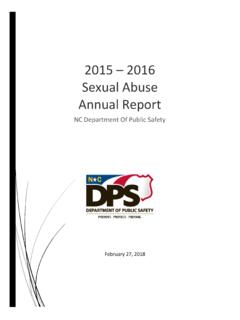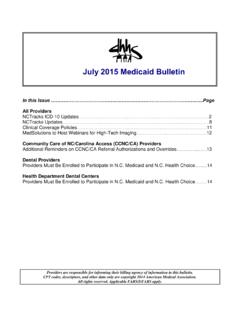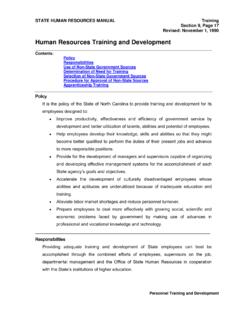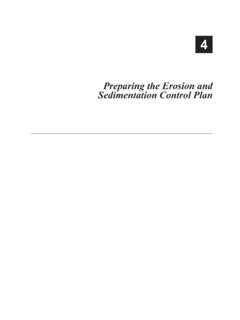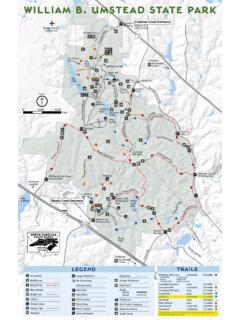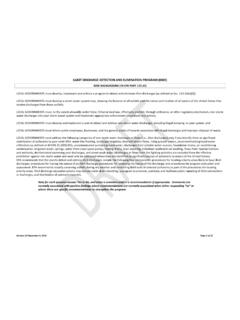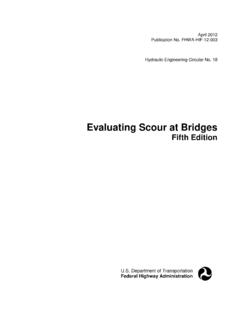Transcription of FIRE ALARM SYSTEM CHECK LIST - NC
1 fire ALARM SYSTEM CHECK LIST March 2013 1 BUILDING NAME: LOCATION: DESIGNER: INSTALLER: INSPECTION BY: DATE: Preparation for Acceptance Test fire authorities have been notified of the SYSTEM test. Also notify any location where alarms are transmitted. DO NOT ROLL fire TRUCKS BY ACCIDENT. All building occupants have been clearly notified of the SYSTEM test. All required documents are on site for the SCO inspection and review. A copy of the project plans and specification A copy of the contractor s approved shop drawings including: o cut sheets o plans o battery size calcs o Voltage drop calcs o Matrix o Training Certificates A copy of the fire ALARM SYSTEM as built drawings showing the routing of circuits installed Final NFPA 72 " fire ALARM SYSTEM Record of Completion" form A copy of the SYSTEM Operation Matrix, giving the FACU response for each initiating device input, has been provided by the fire ALARM installer to facilitate testing.
2 A copy of the sensitivity report A copy of the printout generated by the 100% device testing NFPA 72 Record of Completion NFPA 72 "Record of Completion" Form, filled out, with all signatures and at FACU Appropriate year of form is used per year of Building Code permit Appropriate chapters must be indicated (see chapter list in the reference section of document) The manufacturer's authorized distributor (by definition the "installer") who made final connections at the FACU and programmed the SYSTEM gave the owner and AHJ advance notice of the required 100% operational tests, so they could elect to attend. NOTE: The required 100% testing cannot properly be done by a single technician without a helper, even if the FACU has Walk-Test or an equivalent feature. Query the tech on how testing was performed. Signatures on the form must match the typed/printed names and each section must be complete.
3 Do not accept a company name in place of the responsible individual. The individual must have a certificate. NOTE: If part or all of the testing was witnessed by a representative of the AHJ, the final line of the form is signed to indicate that. (SCO design contracts give that responsibility to the electrical PE.) Verify the technician who programmed the ALARM SYSTEM was trained and certified by the manufacturer, for the specific FACU model being installed, within the past 2 years. (A copy of the cert. should have been submitted with the Shop Drawings.) NICET Level III certification will extend this to 36 months. REVIEW THE FOLLOWING ITEMS FROM THE SHOP DRAWING SUBMITTAL: Contractor has submitted battery calculations to the designer, verifying the SYSTEM meets applicable capacity requirement of NFPA 72. The minimum endurance is 24 hours plus 5 minutes of ALARM load.
4 See the specification for additional requirements imposed by the AHJ. Battery sizing calculations verifying adequate Amp-Hour rating, indicating that the worst case NAC voltage on battery is within ALARM notification appliance listing, and that NAC ALARM load voltage drop at EOL does not exceed 14% of battery voltage. Notification Appliance Circuit (NAC) calculated current draw, demonstrating that none exceed 80% of rated module output. If SYSTEM is the Emergency Voice/ ALARM type, amplifier load calculations. Copy of factory training certificates for technicians who programed the SYSTEM . REVIEW THE FOLLOWING ITEMS FROM 100% Test: SYSTEM Status and Programming Report, which includes the following 3 elements: Program settings for each ALARM initiating device Current sensitivity reading of each smoke detector SYSTEM operational matrix, giving response for each ALARM input March 2013 2 If building has smoke purge SYSTEM , an HVAC balance report in purge mode Two bound copies of the following information on the SYSTEM (may be combined): Manufacturer's technical literature (cut sheets) on SYSTEM components Required maintenance schedule on SYSTEM , to comply with NFPA 72 As-built drawings with loop #'s, device addresses, equipment terminals COMPARE DOCUMENTS TO INSTALLATION Shop drawings calcs: NFPA 72 says: Installed size is.
5 FACU batteries____AHr___@___V each ____AHr___@___V each ____AHr___@___V each NAC batteries ____AHr___@___V each ____AHr___@___V each ____AHr___@___V each DACT batteries____AHr___@___V each ____AHr___@___V each ____AHr___@___V each SLC loops _____class_____ _____class_____ _____class_____ NAC Circuits _____class_____ _____class_____ _____class_____ CHECK fire ALARM Control Panel(s) VERIFY SYSTEM IS IN TEST MODE AND THE fire TRUCKS WILL NOT ROLL. Operating instruction summary is framed and mounted at (or inside) the FACU. Green grounding wire is bonded to FACU cabinet, and also connected to designated terminal on motherboard (if any). AC Power o Branch circuit to FACU does not share conduit with 24vdc ALARM initiating circuits or notification appliance circuits. o Circuit breaker(s) serving FACU (and associated equipment) have lock on clips and red dot at breakers.
6 (Some electricians will not paint the handle to avoid damage to the breaker) o Placard inside FACU gives the following info on this circuit: Panelboard location, panelboard identification, and branch circuit number (The same applies to SNAC panels and any other SYSTEM control equipment) o Surge arrestor model listed in project spec (feed-through type with "pi" configuration) is installed at electrical panelboard, on the 120vac branch circuit to FACU. Arrestor leads are trimmed as short as practical. See attached wiring diagram for more info. fire ALARM control unit (FACU) is powered up and clear of alarms, supervisory signals, and trouble conditions. Have ground fault put on any ALARM initiating or notification appliance (horn-strobe) circuit. FACU must indicate "ground" and general "trouble." Verify this ordinary "trouble" signal is not sent to any Remote Supervising station .
7 Record battery size and verify date of installation is marked on each battery (Marking of the date of manufacture of the battery is a code requirement so you will find 2 dates) Have technician disconnect a battery lead and verify the FACU indicates a local trouble signal within one minute of that action. Reconnect battery, then turn off 120vac. Batteries should measure approx. 13 volts, and differ < volt. (Also CHECK batteries in any booster power supplies.) If SYSTEM is connected to Remote Supervising station , verify the FACU did not transmit AC Power Failure "trouble" signal, as it was not maintained for 1-3 hours. Have technician confirm FACU is programmed to send an AC power failure trouble signal to Remote Supervising station if power loss continues for 1 hour minimum to 3 hours maximum. Also, verify that no other types of "trouble" signals are reported.
8 March 2013 3 The FACU and any transponders, sub-panels, DACT and "ADA" booster power supplies must be protected by a smoke detector within 15 feet of their location, measured horizontally, as required by Code (NFPA 72). Addressable loop controller circuits are Class A , with isolation modules at FACU on the outgoing and return loop, after each 25 addressable devices (max) on the loop, and (if < 25 devices) at midpoint. o Have the technician apply a short circuit on the SLC loop. This will force two isolation modules to clamp. The test is to verify their operation and device count between the two that clamp. o With AC power off, there will be multiple troubles on the SYSTEM . The total count will increase during this test. Exclude the count prior to the short. o On retrofit and repair work where the AHJ has approved the use of a class B SLC wiring design the isolation modules will not be installed.
9 O Verify the number of devices between Isolation modules meets the specification requirement. While on battery power, initiate ALARM . Batteries should remain at 12+ volts each, but dropping slowly. Let ALARM continue during next step. Verify the Notification Appliance Circuit (NAC) voltage drop at the EOL is < 3 volts. Do this separately for each NAC. Look at the shop drawing to find the worst case scenarios when spot checking at a final. Silence the ALARM and verify that any Remote Supervising station has received a fire ALARM signal. Reset the FACU and verify the station receives a subsequent "restore" signal, indicating the ALARM condition has been cleared. Verify requirements on wire type and gauge were followed and that the color code for circuits is proper throughout the SYSTEM . (Review specifications and shop drawing requirements.). Have installing technician demonstrate that the SYSTEM is programmed so all spot- type smoke detectors have automatic drift compensation and FACU will indicate when prescribed sensitivity limits are reached or exceeded.
10 If SYSTEM has provisions for ALARM verification" algorithm, arm it only if needed for the environment. Do not apply it to multi-sensor or multi-criteria smoke detectors. If any addressable control relays are installed, verify their contact ratings are suitable for connected load. (Some are rated for resistive loads only.) Also, if they require separate 24vdc power for operation, verify the circuit is electrically supervised. Compare their installed location to the design intent. All field wiring in the SYSTEM has wire markers where landed at the FACU, and also in the terminal cabinet(s) on each floor of multistory buildings. If SYSTEM uses an LED zone annunciator to provide a quick visual overview of the fire scenario for responding public safety personnel (general fire area and type of alarms), a framed directory or typed/engraved LED labels provide clear information on "zone" (area) boundaries and the type(s) of alarms ( , smoke, waterflow, etc.)
